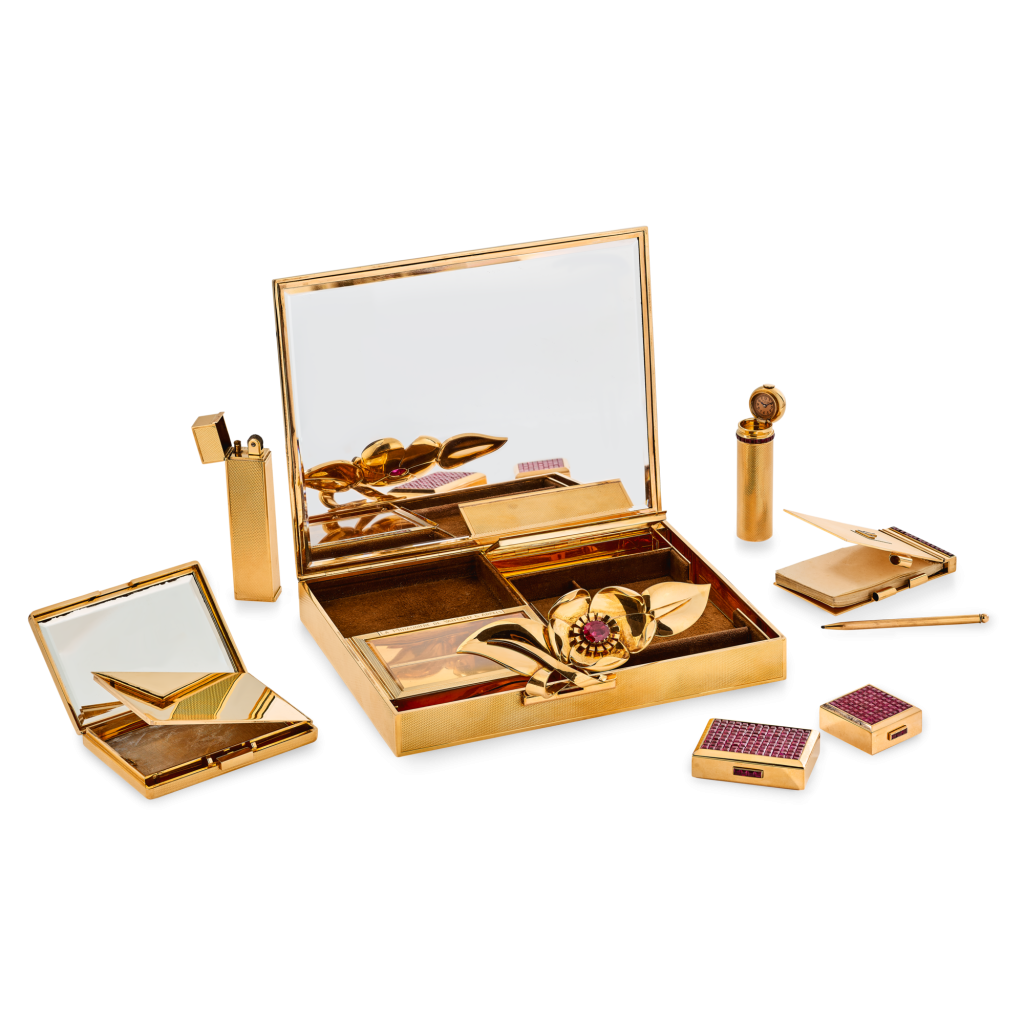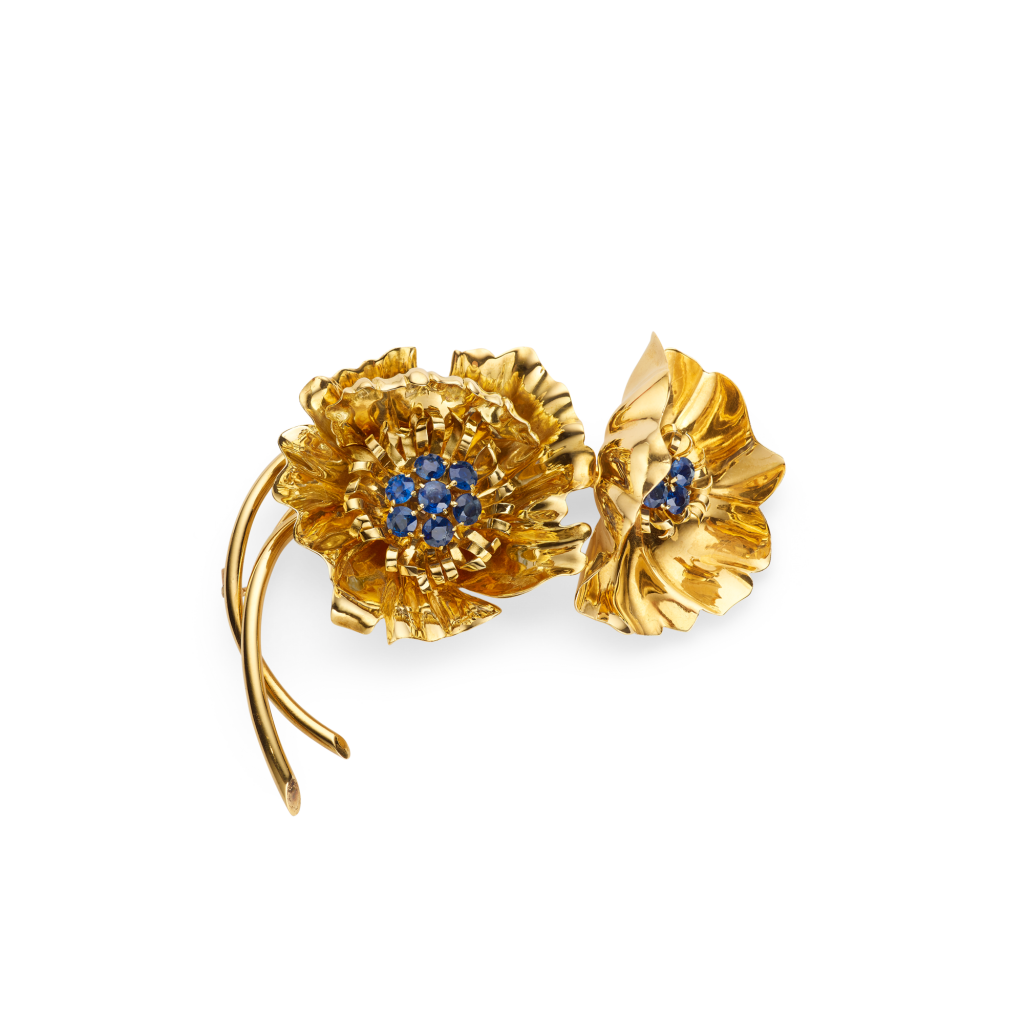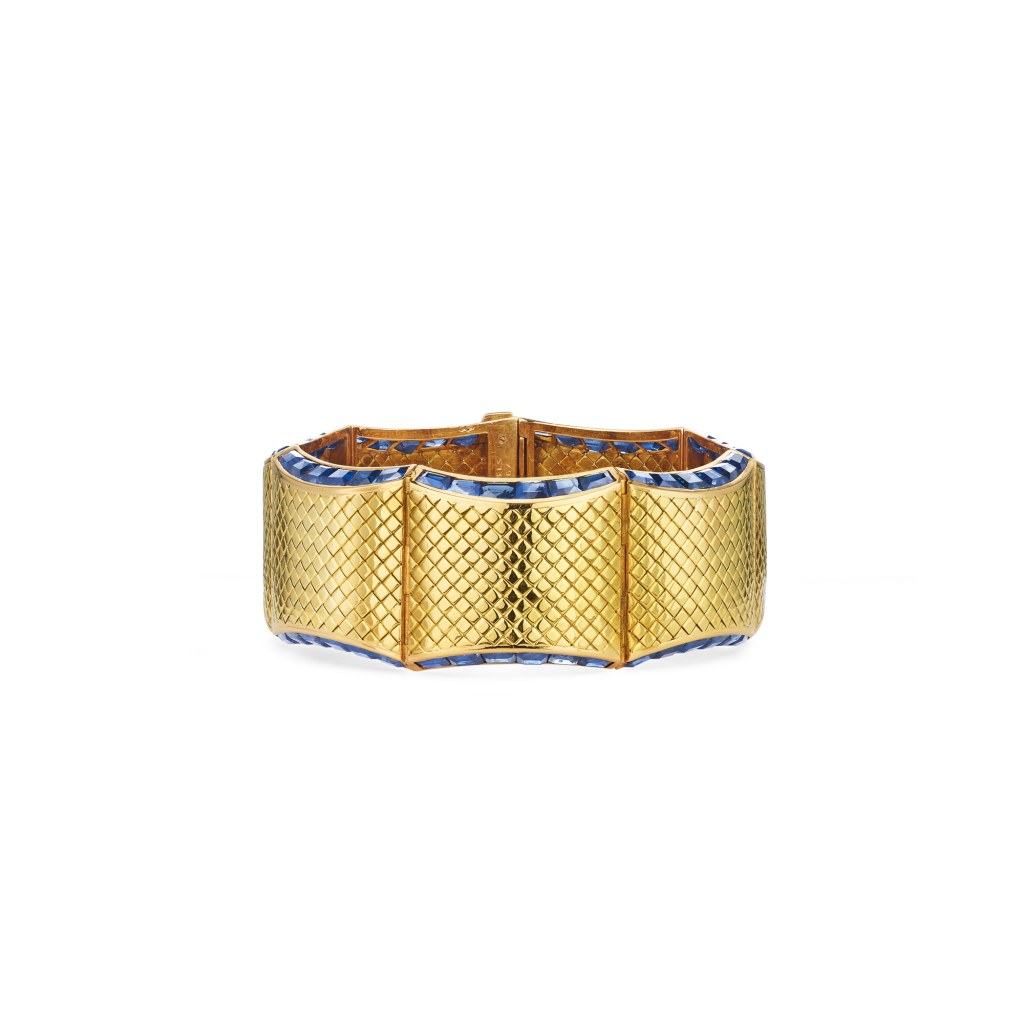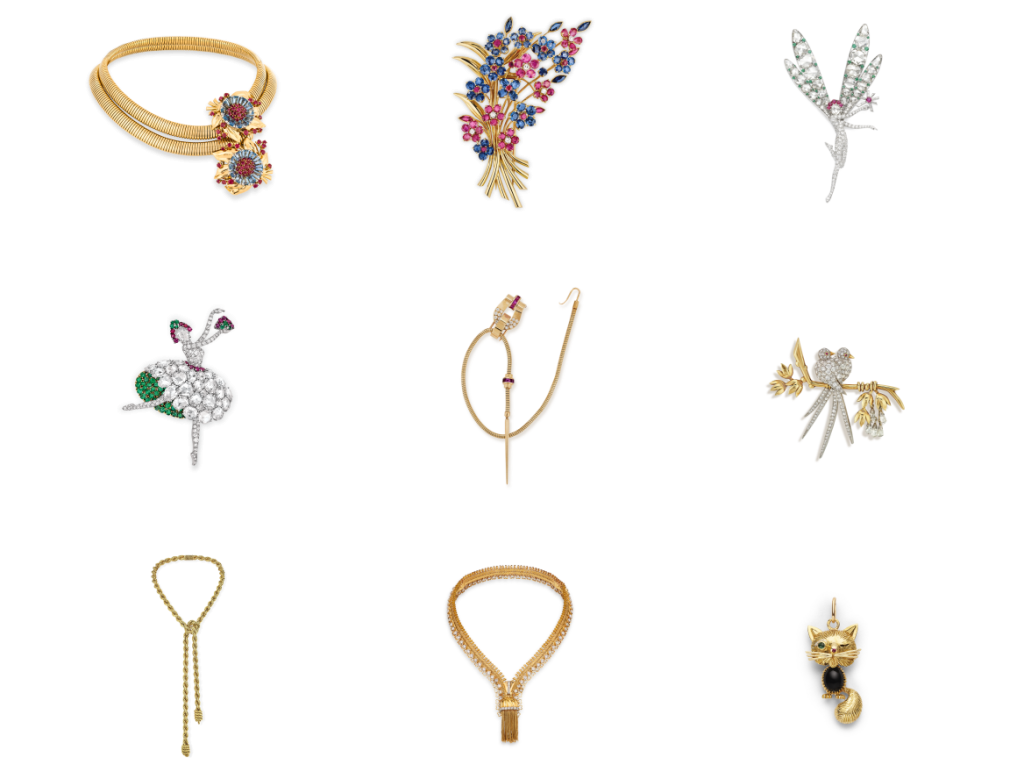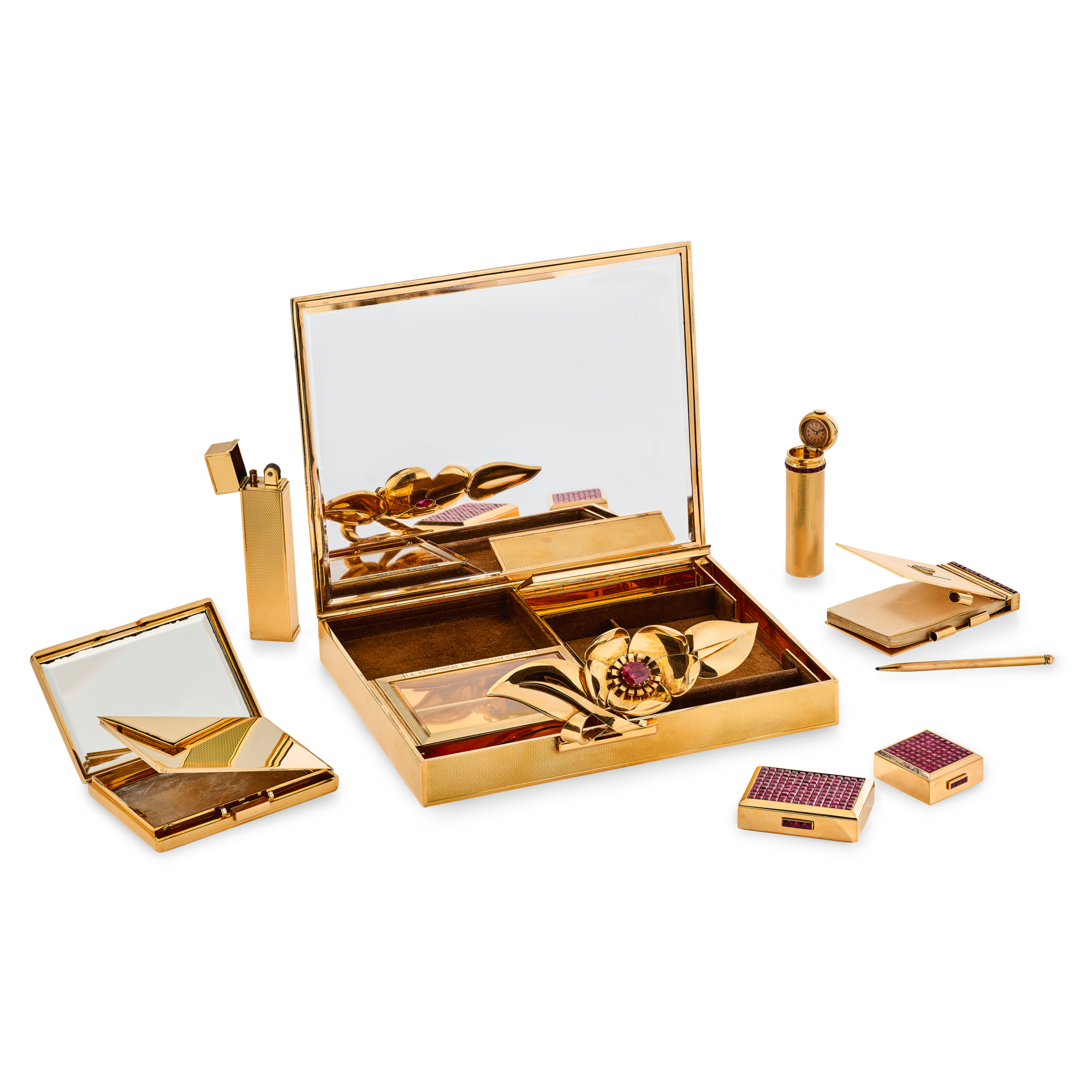
Minaudière and Camellia clip
Creation details
- Creation year 1938
- Usage Minaudière
- Dimensions 160 × 120 × 30 mm
The Minaudière, patented in 1933, was undoubtedly one of Van Cleef & Arpels’ most successful creations. Its success was due not only to the new attention paid to the functionality of objects, but also to the esthetic revival of the Maison’s ateliers during the 1930s…
The Minaudière is composed of a rectangular box, in this case in guilloché yellow gold, and owes its originality to the ingenious arrangement of its interior. The lid has a mirror on its underside and opens onto an array of small compartments. This particular example contains a powder compact, of similar design to the box itself, monogrammed with the letter “L” at its center in calibrated rubies on a polished yellow gold ground. Its other accessories include a notebook and pencil, a box for sweets and a pill box, all in yellow gold. The small boxes with lids and clasps are adorned with mystery set rubies. These objects are completed by a lipstick holder in guilloché yellow gold, its lid edged with a row of calibrated rubies featuring a watch; a lighter combining guilloché and polished yellow gold; a tortoiseshell comb edged with gold; and another watch, this time hidden in the structure of the Minaudière itself. A flower of polished yellow gold framed by two leaves serves as the clasp, its petals curving inward around a heart set with a circular ruby.
Minaudière and Camellia clip
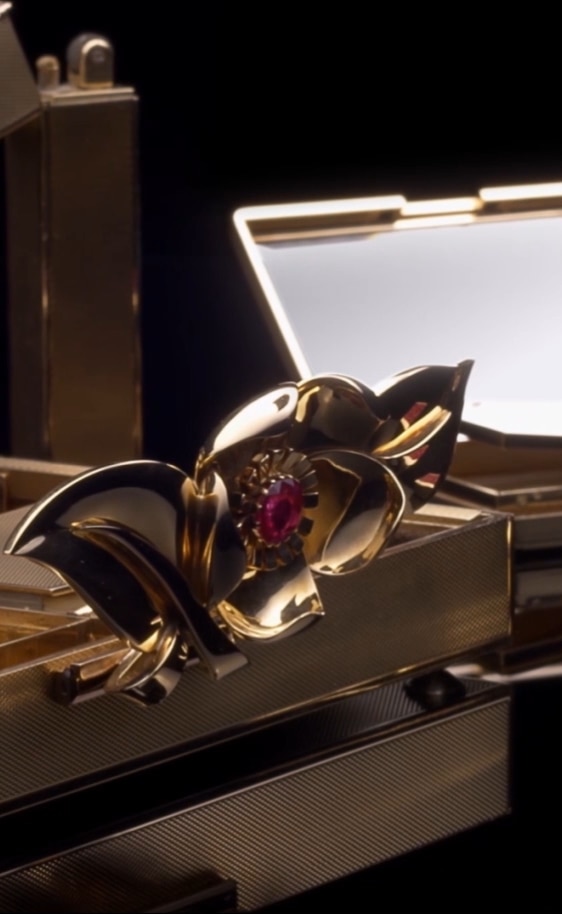
The expression of elegance
The Minaudière’s functional qualities were praised as “Practical”1Van Cleef & Arpels commercial catalog “La Minaudière”, c. 1933. Paris, Archives Van Cleef & Arpels. and “useful”2Anonymous, “Boîtes à vanités,” Vogue Paris, January 1935, p. 80. from the outset. “[In this] flat, light case […], everything is stored as in a minuscule cupboard.”3Van Cleef & Arpels commercial catalog “La Minaudière”, c. 1933. Paris, Archives Van Cleef & Arpels. The compartments are organized in keeping with the objects they are made for: all the “accessories that elegance invariably requires” are grouped together in a small space whereas, until then, they would have been scattered “in an untidy fashion in a purse.”4Van Cleef & Arpels commercial catalog “La Minaudière”, c. 1933. Paris, Archives Van Cleef & Arpels.
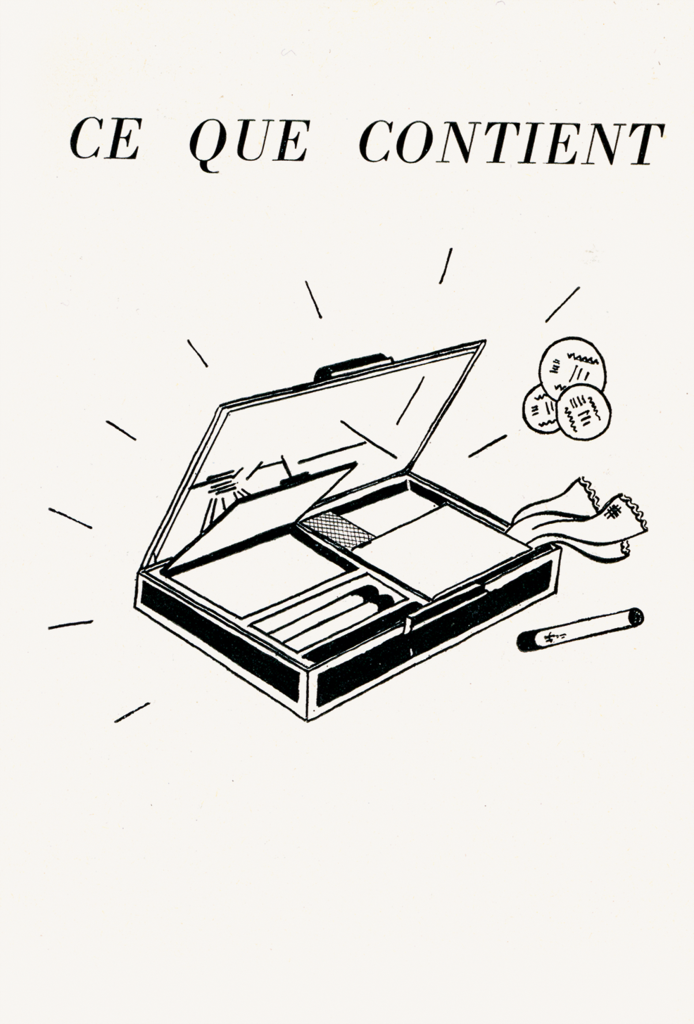
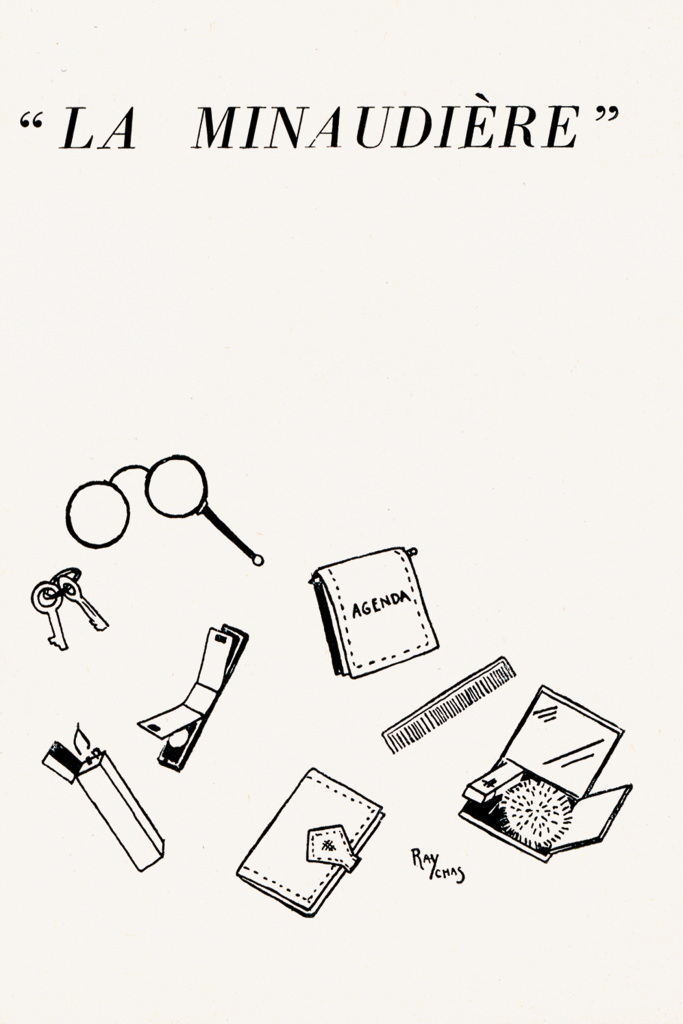
A utilitarian accessory
Van Cleef & Arpels’ interest in the functional aspect of jewelry accessories took its inspiration from the consideration given by architects and furniture designers, at that time, to the uses of an artwork. The Maison’s archives are particularly informative in this respect. On the back of the gouachés for these objects are plans of the various compartments intended for the inside of the box.
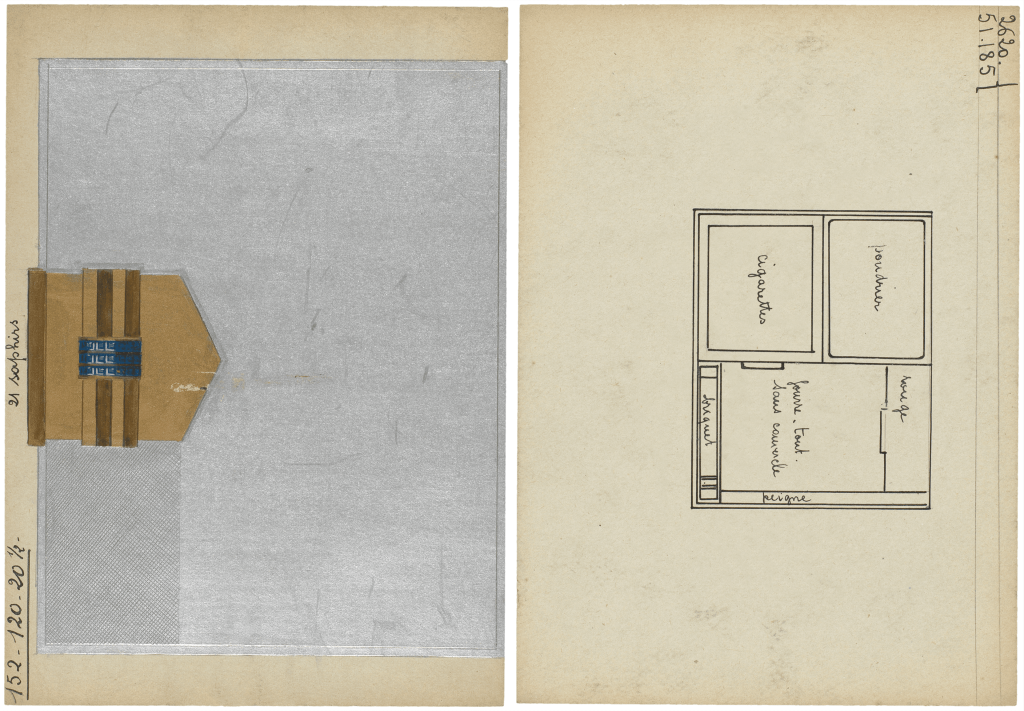
It’s interesting to compare these plans with those designed for housing by Modernist architects such as Walter Gropius and Eileen Gray. “As clean as the metallic recipients that the surgeon puts through the sterilizing machine,” the “modern precision”5Anonymous, “Boîtes à vanités,” Vogue Paris, January 1935, p. 80. of the Minaudière was nonetheless tempered by the attention given to its decoration and its luxurious jewelry techniques, such as the mystery set.
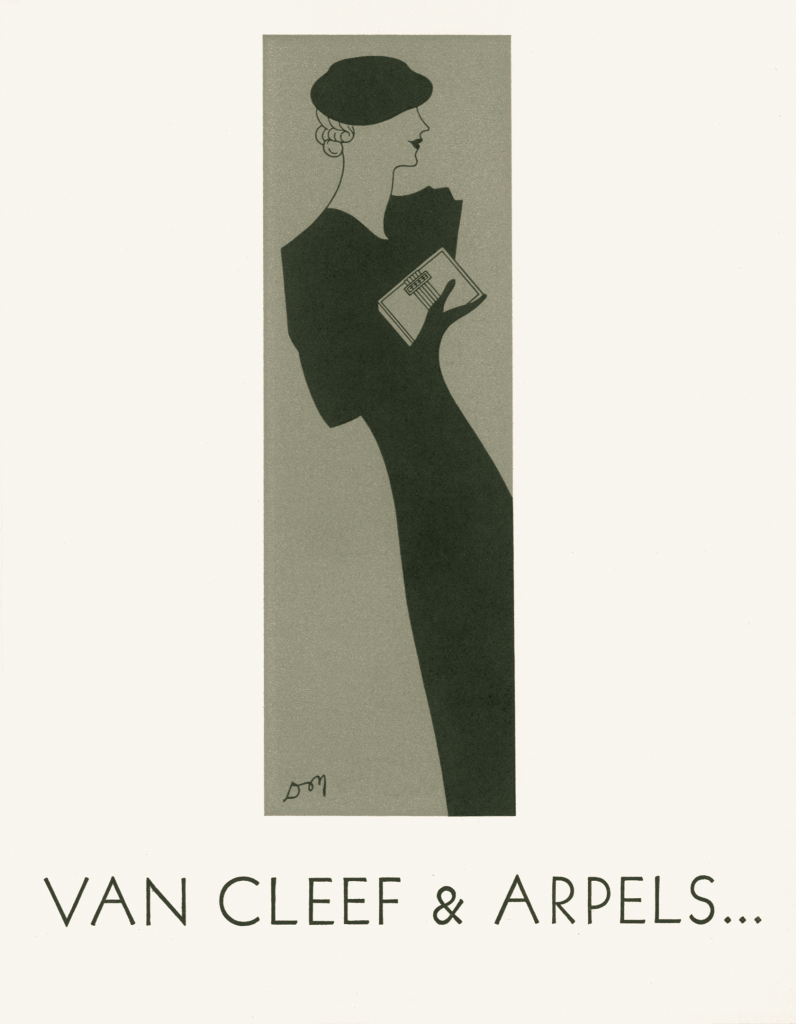
To go deeper
